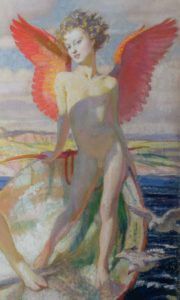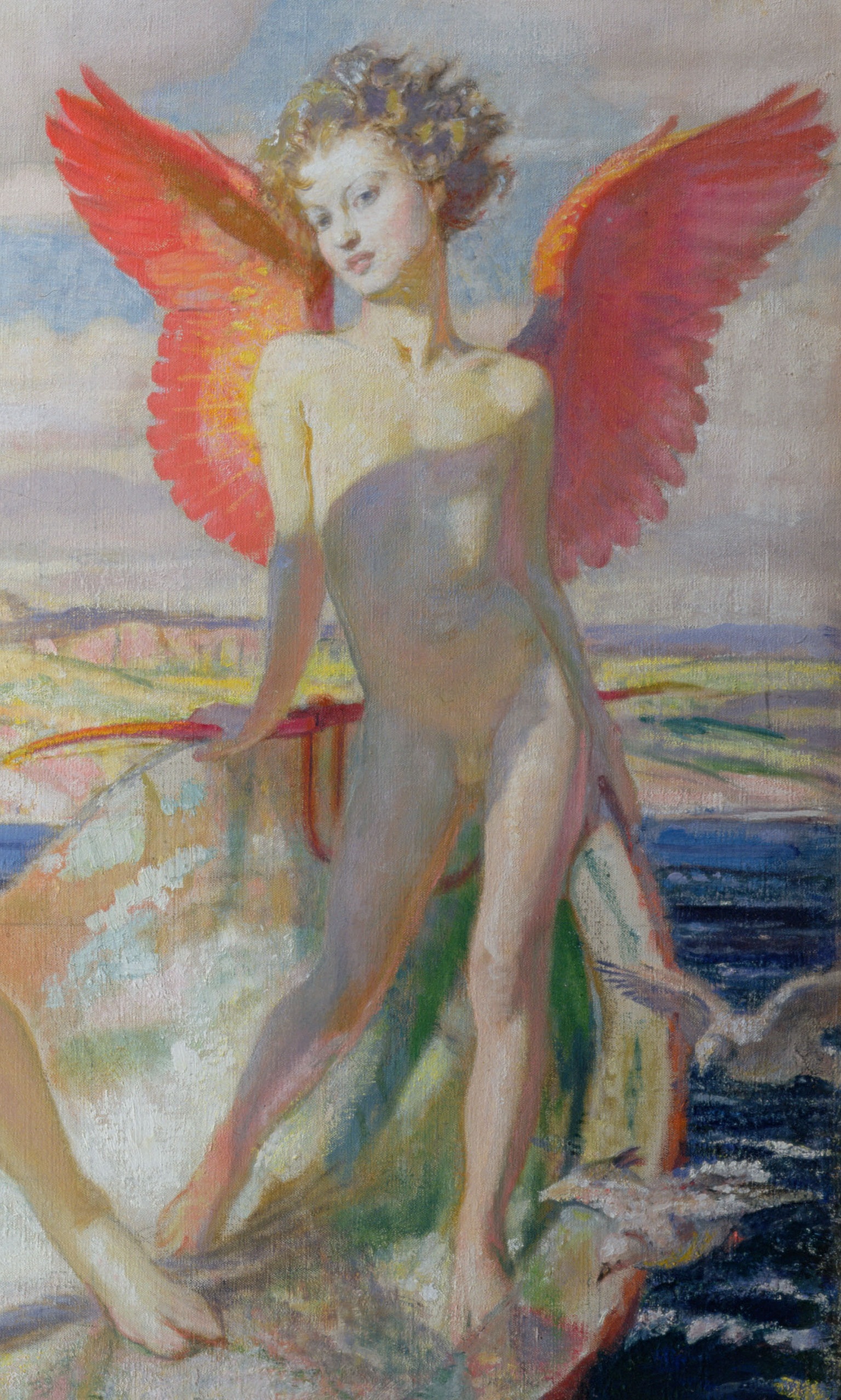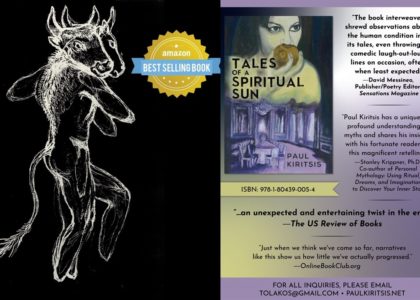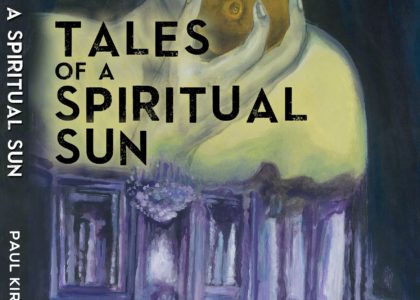
Scouring the last twenty or so years, I can think of no moment that was more empowering, satisfying and enchanting for the contemporary Greek and the Hellenic Diaspora than the Opening Ceremony of the 2004 Summer Olympic Games. One hundred and eight years had elapsed since the Modern Olympics were last held in Athens, a date which also signified their re-induction into a world whose cultural axis had shifted tenfold since the Classical Period, and the cosmic eye was now keenly focused on the creative and innovative aptitude of the modern Greeks to reinterpret a cosmology and resynthesize the theatre of a world history in which they had taken centre stage as the birthplace of its principle protagonists. In the end, the creative ingenuity that had defined their ancient ancestors flashed through modern-day consciousness like a bolt of lightning, inspiring them to stitch together an artistic program that was awe-inspiring from both a visual and conceptual perspective.
For those that may have forgotten, the program was divided into two primary sections. The first, entitled “Allegory”, offered a metaphoric recapitulation of the birth of the entire cosmos and of human consciousness; the second, “Hourglass” or “Clepsydra” in Greek, set in motion a host of flotillas that circumscribed the entire history of Greece along with mythologems born of Hellenic consciousness in chronological order. The latter began with the Minoan snake goddess, a symbol of fecundity and fertility, and ended with the contemporary equivalent of a pregnant woman. Omnipresent from the second portion of the artistic feature onwards was the soulful and winged Eros, that supernal being of love, who hovered exuberantly above a linear celebration of Greek history as it passed beneath him.
Many people would question this central prominence the modern Greeks ascribed to the God of Love during the artistic parade; why is Eros, the companion and son of Aphrodite, standing eternally vigilant over this abbreviated sequence of historical transmutation? Further still, why is his skin blue? To answer such questions we must dissect this celestial inhabitant of Olympus historically. For most people today, Eros or Cupid in Latin is recognized as the progeny of Aphrodite or Venus, a mischievous, youthful and shrewd winged cherub whose main pastime involved piercing the hearts of gods and mortals with his magical arrows:
“Evil his heart, but honey-sweet his tongue.
No truth in him, the rogue. He is cruel in his play.
Small are his hands, yet his arrows fly far as death.
Tiny his shaft, but it carries heaven-high.
Touch not his treacherous gifts, they are dipped in fire.”
As the above discourse vindicates, the wily Eros is like a small boy who continuously inveigles gods and mortals into unruly situations for the sake of personal entertainment without ever having to suffer any vengeful retaliation himself. Indeed, it is a privileged position that points to a mastery of the art of deception coupled with a carefree and cheerful disposition that disarms even the most hateful of creatures. This is the one face of Eros that has recurrently coloured the perceptions of the artisanal mind of late antiquity and the Renaissance in its plight to capture the essence of divinity in painting, architecture, sculpture and pottery, but it is only a superficial, conventional veneer which conspires to hide a truer, more profound and all-encompassing conceptual meaning that has existed in our memes and genes since our coming to consciousness. The latter can be glimpsed in the early stories of Eros in which he appears as a solemn, level-headed and thoughtful youth bent on bequeathing spiritual gifts to humanity. These gifts are offerings of love, and when I say love I mean an unconditional and innate adoration, respect, yearning for, and faith in another living being that illuminates the soul, exorcises any feelings of loneliness and futility from one’s life, and transcends the carnal chemistry of purely physical attraction or loin-bound and lascivious passion. Nowhere is this understanding clearer than in Platonic discourse, which states that, “Love–Eros– makes his home in men’s hearts, but not in every heart, for where there is a hardness he departs. His greatest glory is that he cannot do wrong nor allow it; force never comes near him. For all men serve him of their own free will. And he whom love touches not dwells in darkness.”
In Hesiod, where he is described as being the “fairest of the deathless gods”, Eros is depicted as a primordial entity beside Chaos and Gaea (the Earth Mother) on the uppermost tier of the ladder of creation. “First Chaos was born, the broad, stable and eternal earth and Eros…” says Hesiod, imbuing the latter with special significance as the force of mutual attraction that pervades the universe and binds everything together through cosmic sympathies, antipathies and correspondences. Its colour of association is blue and sometimes violet or purple. This approach to the Eros deity as a universal kind of love not only underpins Platonic metaphysics as we know it, but implicates love to have been the motivation for the differentiation of the cosmos into the duality of heaven and earth, light and dark, male and female, and so forth. The first cogitation of the divine mind which brought the majesty of this universe was indubitably an autogenerative act of love, or self-love if you like. When the overarching entity of this cosmos, the Creator, or any entity in fact, comes to consciousness it becomes enamoured of its own form or shape as well as the miracle of being and seeks to reproduce itself, an act which involves a level of narcissism and self-love. Did God not self-reflect on the primeval waters of chaos before proceeding to carve out the oikoumene? Did Narcissus not glimpse his own reflection upon the limpid surface of a lake before being overcome by intense autoeroticism?
Humanity’s awakening or coming to consciousness is also described as having been facilitated by this universal love. In the first tractate of the Corpus Hermeticum, entitled Poimandres: The Unity of Knowledge of the World, the Self, and God, the creation of “Man” is attributed to a conjunction between God’s transcendental image and nature under the stellar alignment of mutual attraction. In this, the marriage or conunctionis of the eternal spirit and the temporal body in one living human being is described through a supernal allegory in which the incorporeal and hermaphroditic protohuman descends from the transcendental to the sublunary realm where He sees the form of Mother Nature for the very first time. Incidentally, both partake of the same ethereal and intangible form as two identical twins might share the same physiognomy, and as a consequence they fall madly in love with one another and long to unite. The incorporeal protohuman then crosses the dimensional barrier separating them and fuses with his desired counterpart in the sphere of matter, creating the double beings of the human race. In this beautiful myth one can see the philosophical tendency to hold in high esteem the like-attracts-like hypothesis of erotic magnetism and reject the commonly held notion of opposites attracting. The former concept underruns the qualitative measures intrinsic to the esoteric correspondences of Neoplatonic thought, a notion which shall not concern us here, and concurrently illuminates an occult landmine of contextual meanings in the saying “Love makes the world go round”.
The first instance we have of a critical dissection of love’s variant qualities in Hellenic culture is Plato’s Symposium. Composed during the fourth century bce, this philosophical text proceeds with a number of public speeches given by preeminent free citizens of classical Athens like Socrates, Pausanias, Aristophanes and Phaedrus regarding the genesis, entelechy and teleology of love. In due course, the accomplices succeed in forming a clear division between desire, jest, jealousy and deceit, all variant qualities which operate under the umbrella of lust, and a much higher, noble and virginal form of love centred on the dignity, integrity and moral perfection of one’s soul. The lower or corporeal qualities, they claim, are embodied and by the Olympian figure of Aphrodite Pandemos, whilst the higher or celestial ones fall under the mediation of Aphrodite Ourania.
Nowhere do we see the negative elementary, caustic and destructive aspects of the former in full-fledged flight than in the literary eroticism of Homer’s Iliad and Odyssey. Desire for official recognition was the overpowering sentiment that led Aphrodite to promise the objectified and ultimate image of desire (Helen of Sparta) to the Trojan youth Paris, who, like all mortal men, succumbed to the impulse of this momentary seduction without fully contemplating the devastating consequences of stealing away a married woman. Hence in awarding the golden apple of discord to Aphrodite, Paris managed to sooth her ego, secure the desire of the most beautiful woman in the world, and indulge the countless hours of wild love-making that went with it. On the other hand, his actions had the undesirable effect of churning up a benthic storm of anger and jealousy for those who’d been intimately involved. In the end, it was the little rotten seed of desire, that rusty kernel of corrupt lust that caused the Trojan War, a battle whereby the lives of gods and mortals, as well as the rumination of the entire cosmos, was momentarily overturned. What Homer wished to illustrate with respects to Eros’ carnal qualities is that while the fulfilment of a desire does evoke profound feelings of worthiness and achievement, the detrimental aftereffects that are set in motion soon afterwards nullify any reward or shallow sense of accomplishment offered by the former.
Another way of contemplating the original meaning of the God of Love and what the ancient Greeks understood by him is to delve into the etymology of the name itself. By modern standards the Greek verb Eros usually refers to intimate or romantic love, but in ancient times the name encompassed a much more profound and dynamic meaning. When an ancient Greek made use of this verb, he or she was revealing a deep-seated craving, an aspiration or desire for spiritual and salvific fulfilment through wisdom and knowledge. From this perspective, the god Eros and the higher psychic principle of divine love which holds the entire cosmos together are one and the same thing. His influence is universal and all-embracing because the human psyche suffers loss of wholeness and interconnectedness with the divine element when it comes into existence and grows conscious of itself as an autonomous being. This fragmentation of the soul usually spurs feelings of disenchantment, emptiness and proceeds to carve out tributaries void of any meaning until the superconscious or higher part of the personality awakens and sets the soul abroad the psychic procession of reintegration.
The latter, usually a painstaking and lifelong process, involves drawing to one’s inner anatomy conciliatory qualities that are indigenous to all creatures and express the uroboric cohesion at the heart of all life. This uroboric wholeness induces a sense of liberation and an abrogation of mechanical laws that inhibit beings void of intellect or those who have become enslaved to hedone, sensual or carnal desires and passions. Feeling an inherent affinity with these higher holistic qualities and knowing at once that they’re also a part of the greater cosmos brings with it a certainty beyond reason that final causes exist. This revelation is nothing less than the materialization of a true transformative path back to an eternal realm of meaning and wholeness. One might describe it as the yellow brick road that leads back to the Emerald City of Oz, that elusive world of the immortals, nectar, ambrosia, the Philosopher’s Stone, the Elixir of Life, and other Godly things. The habit energy that keeps us from straying from this purpose once we’ve embraced it is divine love; the love for wisdom, knowledge and courage that has defined human beings and their relationship to the cosmos since the birth of civilisation in Mesopotamia. Eros then, or the concept of divine love, enters into time because he mediates over this psychic process of self-actualization for each human being, but he also dwells in the timeless and transcendental zone of the cosmos as the originator of the first cogitation. Hence for the ancients Eros was a universal force who existed “above” and “without” and was casually reflected “below” and ‘within”, enabling the proliferation of species through sexual reproduction whilst simultaneously pushing conscious life to enlightenment and immortality through wisdom and knowledge.
Any discussion on Eros and the divine and carnal aspects of his archetype would remain incomplete if it didn’t draw into the equation the notion of physical attractiveness. Eros is eternally captivated by beauty, irrespective of whether his inherent ‘form’ pertains to the body or soul, and he turns towards the supernal as bean stalks strive to reach pockets of sunlight. In classical Greece, the qualities that were used to measure or quantify beauty were balance and proportion, or symmetry of form. If a person or object exhibited this feature, he, she or it was deemed beautiful and demanded the veneration, honour and respect of the masses. This is why the male and female bodies were always depicted proportionally in art and sculpture and why geometry played such a fundamental role in the alignment, structure, position, and the aesthetic embellishments of temples, theatres, agoras, and other ancient monuments.
At this point, a great many might question the ancient surmise to view beauty on these terms, like a magical alpenglow which might appear gorgeous and romantic to the star gazers but means absolutely nothing to the blind. One might find the answer to this question by looking to the night skies, where the goddess of love’s celestial equivalent, the planet Venus, traces a perfect pentagram in sidereal space over the course of eight years and one day. It is the only celestial body whose orbital movements create such an elaborate and distinct geometrical dance about the Sun, reminding us that the delimitation of pentagonal form in the primeval static of the universe is a signature of cosmic harmony. As a dialect of beauty, the latter arms the matriarchal situation in the heavens with cosmological meanings and qualitative markers that are dutifully reflected on the Earth. If symmetry and harmony are inviolable characteristics of a celestial beauty that defines a wholly feminine spirit, then it stands to good reason that they should also form the nucleus of corporeal beauty. As above, so below, right?









